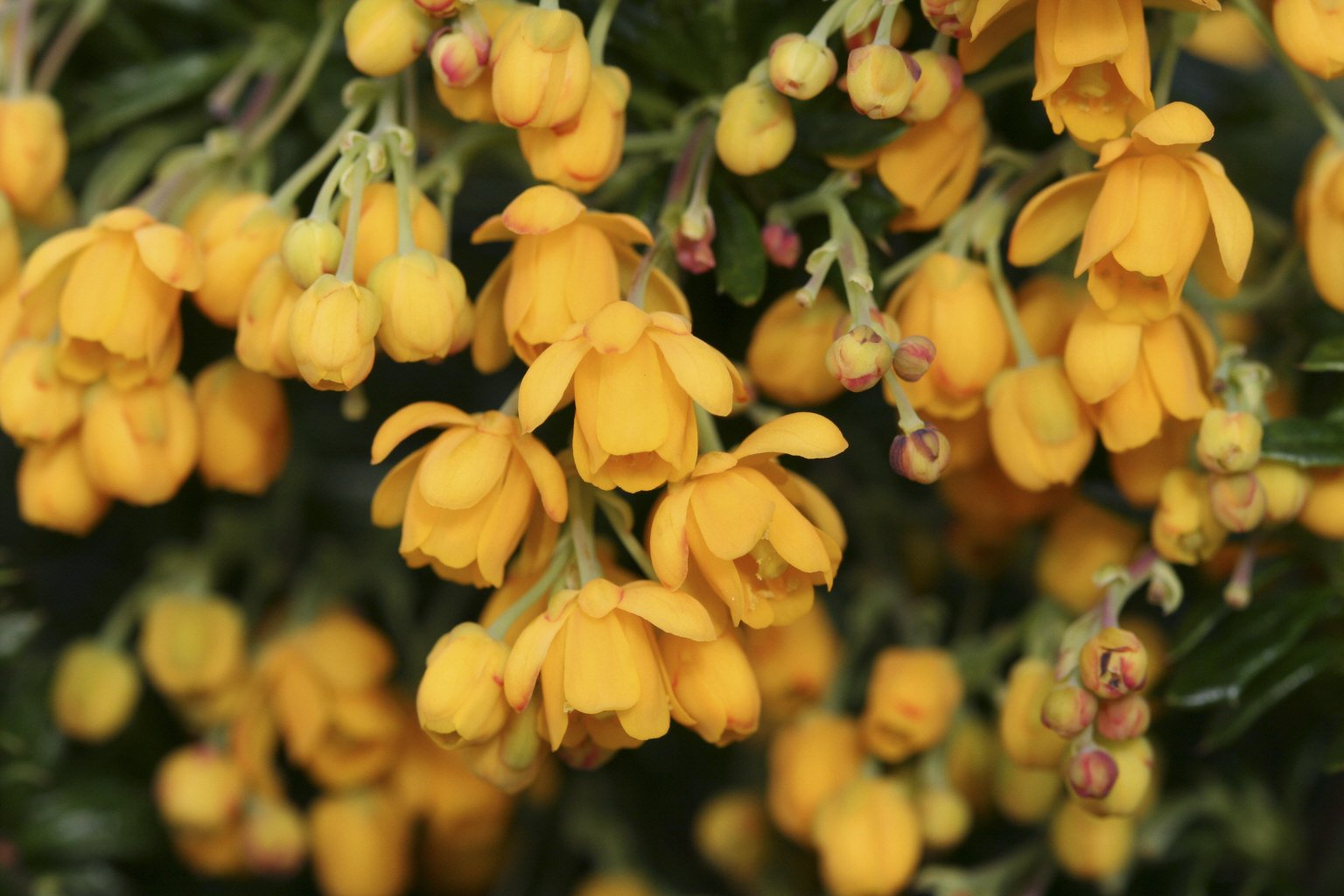Berberis × irwinii 'Corallina Compacta'
golden barberry 'Corallina Compacta'
A spiny dwarf evergreen shrub of rounded habit, with stiff, narrow, dark green leaves and rich orange-yellow flowers opening from reddish buds, and followed by blue-black berries
Size
Ultimate height
0.1–0.5 metresTime to ultimate height
10–20 yearsUltimate spread
0.1–0.5 metresGrowing conditions
Moisture
Moist but well–drained, Well–drainedpH
Acid, Alkaline, NeutralColour & scent
| Stem | Flower | Foliage | Fruit | |
| Spring | Orange Yellow | Green | ||
|---|---|---|---|---|
| Summer | Green | |||
| Autumn | Green | Black Blue | ||
| Winter | Green |
Position
- Full sun
- Partial shade
Aspect
East–facing or North–facing or West–facing
Exposure
Exposed or Sheltered Hardiness
H5Botanical details
- Family
- Berberidaceae
- Native to GB / Ireland
- No
- Foliage
- Evergreen
- Habit
- Bushy
- Potentially harmful
- Fruit are ornamental - not to be eaten. Wear gloves and other protective equipment when handling. Pets: Fruit are ornamental - not to be eaten - see the HTA guide to potentially harmful plants for further information and useful contact numbers
- Genus
Berberis can be deciduous or evergreen shrubs with spiny shoots bearing simple, often spine-toothed leaves, and small yellow or orange flowers in axillary clusters or racemes, followed by small berries
- Name status
Accepted
How to grow
Cultivation
Grows in any well-drained soil in full sun or partial shade. Superb for hedging
Propagation
Propagate by semi-hardwood cuttings
Suggested planting locations and garden types
- Cottage and informal garden
- Coastal
- Low Maintenance
- Flower borders and beds
- Hedging and screens
Pruning
Pests
May be susceptible to aphids and berberis sawfly
Diseases
May be susceptible to powdery mildews and sometimes by honey fungus
Get involved
The RHS is the UK’s gardening charity, helping people and plants to grow - nurturing a healthier, happier world, one person and one plant at a time.
